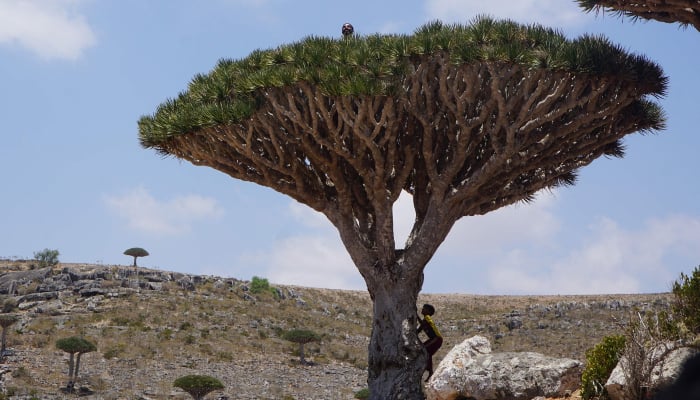
Rare dragon’s blood tree known for their iconic mushroon-shape are under threat due cliamte change and goat grazing.
According to Euronews, dragon’s blood trees famous for their unique shape and red sap, are found only on Yemen's Socotra island. However, they're struggling to survive due to climate change.
But increasingly severe cyclones, grazing by invasive goats, and persistent turmoil in Yemen, which is one of the world’s poorest countries and beset by a decade-long civil war, have pushed the species, and the unique ecosystem it supports, toward collapse.
Sena Keybani, whose family runs a nursery dedicated to preserving the species, “Seeing the trees die, it’s like losing one of your babies.”
An island of dragon’s blood forests
Often compared to the Galapagos Islands, Socotra floats in splendid isolation some 240 kilometres off the Horn of Africa.
Its biological riches, including 825 plant species, of which more than a third exist nowhere else on Earth, have earned it UNESCO World Heritage status. Among them are bottle trees, whose swollen trunks jut from rock like sculptures, and frankincense, their gnarled limbs twisting skywards.
But it’s the dragon’s blood tree that has long captured imaginations, its otherworldly form seeming to belong more to the pages of Dr Seuss than to any terrestrial forest. The island receives about 5,000 tourists annually, many drawn by the surreal sight of the dragon’s blood forests.
Visitors are required to hire local guides and stay in campsites run by Socotran families to ensure tourism income is distributed locally. If the trees were to disappear, the industry that sustains many islanders could vanish with them.








